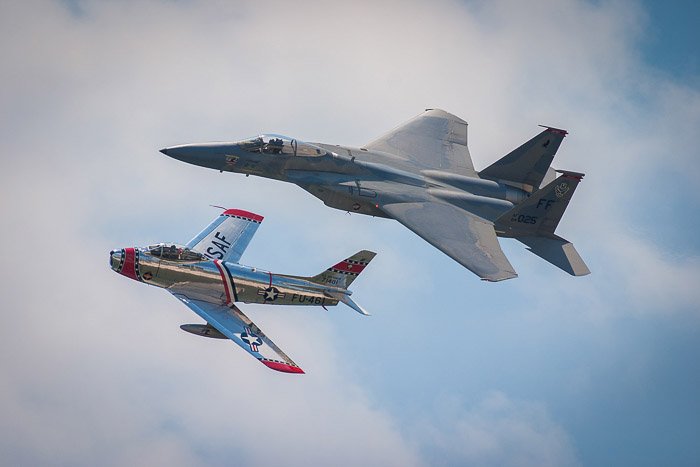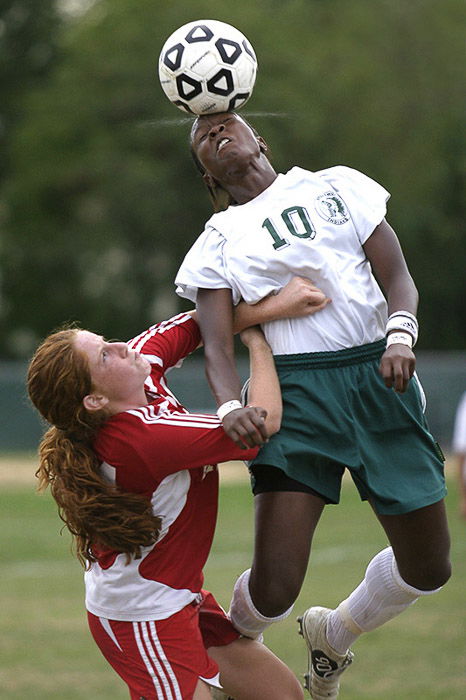If you’re looking to add a bit of excitement to your photography, then high speed photography may be just what you need. In this article, we’ll discuss 9 tips for taking great high speed photos. So if you’re interested in learning more about high speed photography, keep reading!

9. Understanding High Speed Photography: Start Shooting at Home
Start with the basics at home before shooting fast-moving animals or motorbikes.
Start practising with splashing objects or popping balloons. These are the best ways to understand high-speed photography.
You only need a few things to get started:
- A tripod (or you need two very stable hands)
- A subject (this can be a glass full of water or a balloon filled with paint)
- A wireless external flash (at least one)
- A black backdrop – this could be a black sheet made of cardboard or anything that won’t reflect light.
- Optional: colored gels, sound trigger.
You also need something that creates the action: a needle to pop the balloon or fruits to dive into the water. Having a helping friend can be useful for high-speed photography sessions.
The good news is that any DSLR camera is suitable for high-speed photography. You have two basic options to capture a fast-moving subject. Shorten the shutter speed or use the flash that only illuminates the subject minimally.

Keep in mind that you need to have enough light as you increase your shutter speed. Always think about the exposure triangle. If you change one of the variables, you need to balance out the other two.
This kind of high-speed photography requires an exposure time that is 1/20 000th of a second. Most of the cameras cannot fulfil this condition. The speed and the direction of your subject will also influence the settings. How should you start then?
8. Practice the Process
For these kinds of photos, you have to shoot in a dark room with a narrow aperture and in Bulb mode. You don’t want any extra light influencing your photograph.
Set up your subject in front of the black backdrop and position your camera.
Set up your external flash so that it points towards the side of the subject. Keep the flash out of your viewfinder.
Put your camera in a manual mode. This way, you can control aperture, ISO and shutter speed. Use the lowest ISO possible. Start with 100 and only increase it if your flash doesn’t provide enough light.
You want to use a small aperture for the largest depth of field. Set the power of your external flash to the lowest. The reason for that is simple: the less power your flash uses, the shorter the flash duration.
This is the key to high-speed photography indoors. The less power, the more you can freeze your scene. Shutter speed is not even critical here because your flash is making the exposure.
 Take a shot without the flashes first. You should get a completely black image. If not, change the ISO or the aperture till you get a black photo.
Take a shot without the flashes first. You should get a completely black image. If not, change the ISO or the aperture till you get a black photo.
Then turn on your flashes and start taking some test shots. You can still adjust the flash duration. Put your camera on Burst Mode so that you have more chances for a good photo.
Remember, you need a bit of luck for high-speed photography. It takes a while until you get your first perfect shot. Keep trying until you feel comfortable with the settings at home and take it to the next level then.
7. Choose the Right Lens
Using high-speed photography outdoors means that you need to prepare for lots of action. A sporting event is the most common example. Most of the time, you are not allowed very close to the moving subjects. This is why using the right lens is very important.
Even from the bleachers, it’s possible to capture frame-filling action shots. The most helpful piece of equipment for sports photography is a longer lens. With a telephoto zoom between 70-300mm, you can cover the entire field from your seat.
This gives you the ability to photograph subjects that are further away. It also means you won’t have to jockey for a place in the front row. To get a different perspective, you may even want to stand on a small stool near a fence.

You are often not allowed to use flash because it can disturb the participants’ attention. Think about adjusting the exposure triangle since you are not using flash.
6. Adjust the Shutter Speed to Avoid Blur
You need to set the shutter speed very fast when photographing any high action scenario. I took many of my favourite action sports shots at 1/500. It’s quick enough to freeze an athlete sprinting down a field without showing any motion blur.
It’s essential to understand how the fast shutter speed affects your exposure. Since the actual shutter is only open for a brief duration, it does not allow much light to reach the sensor. The raised ISO, along with a wider aperture like /f4 will compensate as needed.
Lightning-fast shutter speed, such as 1/1000 gives us the ability to pause life. You are capturing instances that the human eye wouldn’t catch. All thanks to advanced technology.
I use this specific setting for the type of heart-pounding action you find at air shows, or in extreme sports. To get a sense of how fast this is, 1/1000 will freeze the spinning blades of an industrial-strength room fan. It will also stop an F-22 jet as it zooms past at 500 miles per hour.

5. Use Shallow DOF for a Higher Shutter Speed
If you flip through the pages of any sports magazine, you’ll notice that the players are sharp. But the fans are out of focus. The wide aperture not only creates that shallow depth of field. It also lets a great deal of light into the camera.
As such, it’s possible to freeze the action. If you are serious about sports or high-speed photography, a lens that opens to f/2.8 is worth the investment. You may even hear people refer to them as ‘fast lenses’. This describes the speed in which the wide aperture lets light into the camera.
Set your lens to the widest possible aperture. Depending on your specific gear, this will likely fall between f/2.8 and f/5.6. This works to throw the background out of focus, bringing full attention to the players.
You don’t want the cars or houses in the distance to distract from the action. Besides creating a shallow depth of field, a wide aperture lets in a great deal of light. This helps to make a proper exposure even in areas with poor light.

4. Use the ISO to Your Advantage
You may be surprised to learn that a high ISO can even be helpful on a bright sunny day. If you are photographing sports, the shutter speed can be no slower than 1/500 to prevent subject motion. As noted before, you’ll also be using a wide aperture around f/2.8.
With these two decisions made, you may take your photo only to find that it’s too dark. This is where the ISO comes to the rescue. Double the ISO number and watch as the photo gets brighter. Still, need more light? Double the ISO again.
This way, you incorporate ISO control into your image-making process. The exposure is no longer limited only to aperture and shutter speed. Using this new technical knowledge also increases your photo opportunities.
With the ability to shoot anywhere, the possibilities are almost endless. Use the ISO to your advantage, and you’ll see a definitive improvement in your craft. Problematic scenes that were once too dark are now well within your reach.
3. Do Not Lose Focus
Most DSLR cameras feature continuous focusing. Ther are also known as AI Servo or Continuous AF. These modes will allow you to track moving subjects.
Keep your center focusing point on the subject with your shutter held halfway down. You can follow the object through your viewfinder and the camera adjusts focus automatically.
When you are ready to make an image, press the shutter all the way down. You can even change the burst mode from ‘single shot’ to the continuous high-speed option. This offers more frames per second to capture even the fastest of action.
Try to anticipate the action for snapping the best photo possible. Be ready to shoot one second earlier than the actual action.

2. Choose the Best Photo Format
You will need many memory cards with all this fast-paced action. I used to bring a portable hard drive with me and download the contents of the card while continuing to shoot. This is no longer necessary as large capacity cards of 64GB have now a very reasonable price.
Shoot in RAW format whenever possible for the most control and best photo quality. If you are short on memory cards, you may want to consider shooting in the Large/Fine JPEG format. This will allow you to fit more images on the card than RAW.
There are some fast-paced situations when shooting RAW is not possible. For sports photography, I prefer the JPEG Large/Fine setting. This affords a bigger buffer size making it possible to shoot more frames before filling up.
For example, a modern DSLR can shoot 31 RAW shots consecutively, but a whopping 1090 in JPEG. This is a huge advantage for those who never want to miss a moment. By starting with a JPEG file, you also cut the extra step of RAW photo processing when you get home.

1. Try the Rule of Thirds for Better Composition
When you look through your camera’s viewfinder, you’ll see a faint outline showing the center of the frame. This is how people learn to compose their pictures. They aim, center their subject, and capture a photo.
To be honest, there are many compositions that work. Using the rule of thirds will get you artistic photo results for sure.
In the picture below, the balance is off, but it’s still a striking image. The key to making this work is the direction in which the quarterback is looking. By having his head facing the open space, we are witness to the play unfolding.
The surroundings which fall outside of the frame are a mystery. This leaves us to wonder what will happen next. Had the player been centered, none of this drama would exist, and the image would be much more static.

High-speed photography is about finding the ideal settings and capturing the right second. With the tips above, you can start practising and improve your skills fast.
Examples of High-Speed Photography
High-speed photography is one of the topics we cover in our creative photography course, Wow Factor Photography.
Below are some of the photos taken by our students. If you’d like to learn more, check out the course here.







